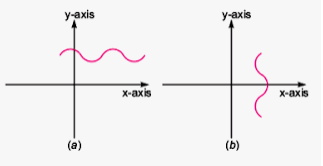A signal which can can be green or red with probability 45and15 respectively, is received by station A and then transmitted to station B. The probability of each station reciving the signal correctly is 34. If the singal received at station B is green, then the probability that original singal was green is Solution in Punjabi
35
67
2023
920
Step by step video solution for A signal which can can be green or red with probability 4/5 and 1/5 respectively, is received by station A and then transmitted to station B. The probability of each station reciving the signal correctly is 3/4. If the singal received at station B is green, then the probability that original singal was green is by Maths experts to help you in doubts & scoring excellent marks in Class 12 exams.
Updated on:21/07/2023Topper's Solved these Questions
Similar Questions
Compute P(A∣B),if P(B)=0.5 and P(A∩B)=0.32
View SolutionWrite the element a12 of the matrix A=[aij]2×2, whose elements are given by : aij=e2ixsinjx
View SolutionWhich one of the following graph represents the function of x? Why?

View SolutionA signal which can be green or red with probability 4/5 and 1/5 respectively, is received by station A and then and 3 transmitted to station B. The probability of each station receiving the signal correctly is 3/4 If the signal received at station B is green, then the probability that the original signal was green is (a) 3/5 (b) 6/7 (d) 20/23 (d) 9/20
View SolutionA single which can can be green or red with probability 4/5 and 1/5 respectively, is received by station A and then transmitted to station B. The probability of each station reciving the signal correctly is 3/4. If the singal received at station B is green, then the probability that original singal was green is
View SolutionDue to economic reasons , only the upper sideband of an AM wave is transmitted , but at the receiving station , there is a facility for generating the carrier . Show that if a device is available which can multiply two signals , then it is possible to recover the modulating signal at the receiver station .
View Solutionएक सिग्नल जिसके हरा अथवा लाल होने की प्रायिकताये क्रमशः 45 तथा 15 है, स्टेशन A द्वारा प्राप्त किया जाता है तथा स्टेशन B को परागत किया जाता है। प्रत्येक स्टेशन द्वारा सिग्लन को सही रूप से प्राप्त करने की प्रायिकता 34 है। यदि स्टेशन B द्वारा हरा सिग्नल प्राप्त किया जाता है, तो सिग्नल के मूल रूप से हरा होने की प्रायिकता है-
View Solutionएक सिग्नल, जिसके हरा अथवा लाल होने की प्रायिकताएं क्रमशः 45 तथा 15 हैं स्टेशन A द्वारा प्राप्त किया जाता है तथा स्टेशन B को पारगत किया जाता है । प्रत्येक स्टेशन द्वारा सिग्नल को सही रूप से प्राप्त करने की प्रायिकता 34 है। यदि स्टेशन B द्वारा हरा सिग्नल प्राप्त किया जाता है तो सिग्नल के मूल रूप से हरा होने की प्रायिकता निम्न है
View SolutionA signal which can be green or red with probability 4/5 and 1/5 respectively . Is received by station A and then transmitted to station B . The probability of each station receiving the signal correctly is 3/4 . If the signal received at station B is green , then the probability that the original signal was green is :
View SolutionThe two radio stations own programs of equal amplitude A and low frequency frequencies omega_1 and omega_2 Where omega_1-omega_2=10^4 Transmit with hertz. A researcher receives signals from both stations simultaneously. gt 2A^2 Can transmit signals. The researcher receives a time interval between two consecutive elevations.
View SolutionA signal which can be green or red with probability 4/5 and 1/5 respectively, is received by station A and then and 3 transmitted to station B. The probability of each station receiving the signal correctly is 3/4 If the signal received at station B is green, then the probability that the original signal was green is (a) 3/5 (b) 6/7 (d) 20/23 (d) 9/20
View Solutionएक सिग्नल, जिसके हरा अथवा लाल होने की प्रायिकताएं क्रमशः 45 तथा 15 हैं स्टेशन A द्वारा प्राप्त किया जाता है तथा स्टेशन B को पारगत किया जाता है । प्रत्येक स्टेशन द्वारा सिग्नल को सही रूप से प्राप्त करने की प्रायिकता 34 है। यदि स्टेशन B द्वारा हरा सिग्नल प्राप्त किया जाता है तो सिग्नल के मूल रूप से हरा होने की प्रायिकता निम्न है
View Solutionएक सिग्नल, जिसके हरा अथवा लाल होने की प्रायिकताएँ क्रमशः 45 तथा 15 हैं, यह स्टेशन A द्वारा प्राप्त किया जाता है तथा स्टेशन B को पारगत (transmit) किया जाता है। प्रत्येक स्टेशन द्वारा सिग्नल को सही रूप से प्राप्त करने की प्रायिकता 34 है। यदि स्टेशन B द्वारा हरा सिग्नल प्राप्त किया जाता है, तो सिग्नल के मूल रूप से हरा होने की प्रायिकता निम्न है
View SolutionA signal which can be green or red with probability 4/5 and 1/5 respectively, is received by station A and then and 3 transmitted to station B. The probability of each station receiving the signal correctly is 3/4 If the signal received at station B is green, then the probability that the original signal was green is
View SolutionDue to economic reasons, only the upper sideband of an AM wave is transmitted, but at the receiving station, there is a facility for generating the carrier. Show that if a device is available which can multiply two signals, then it is possible to recover the modulating signal at the receiver station.
View SolutionA signal which can be green or red with probability 4/5 and 1/5 respectively, is received by station A and then and 3 transmitted to station B. The probability of each station receiving the signal correctly is 3/4 If the signal received at station B is green, then the probability that the original signal was green is (a) 3/5 (b) 6/7 (c) 20/23 (d) 9/20
View Solution
